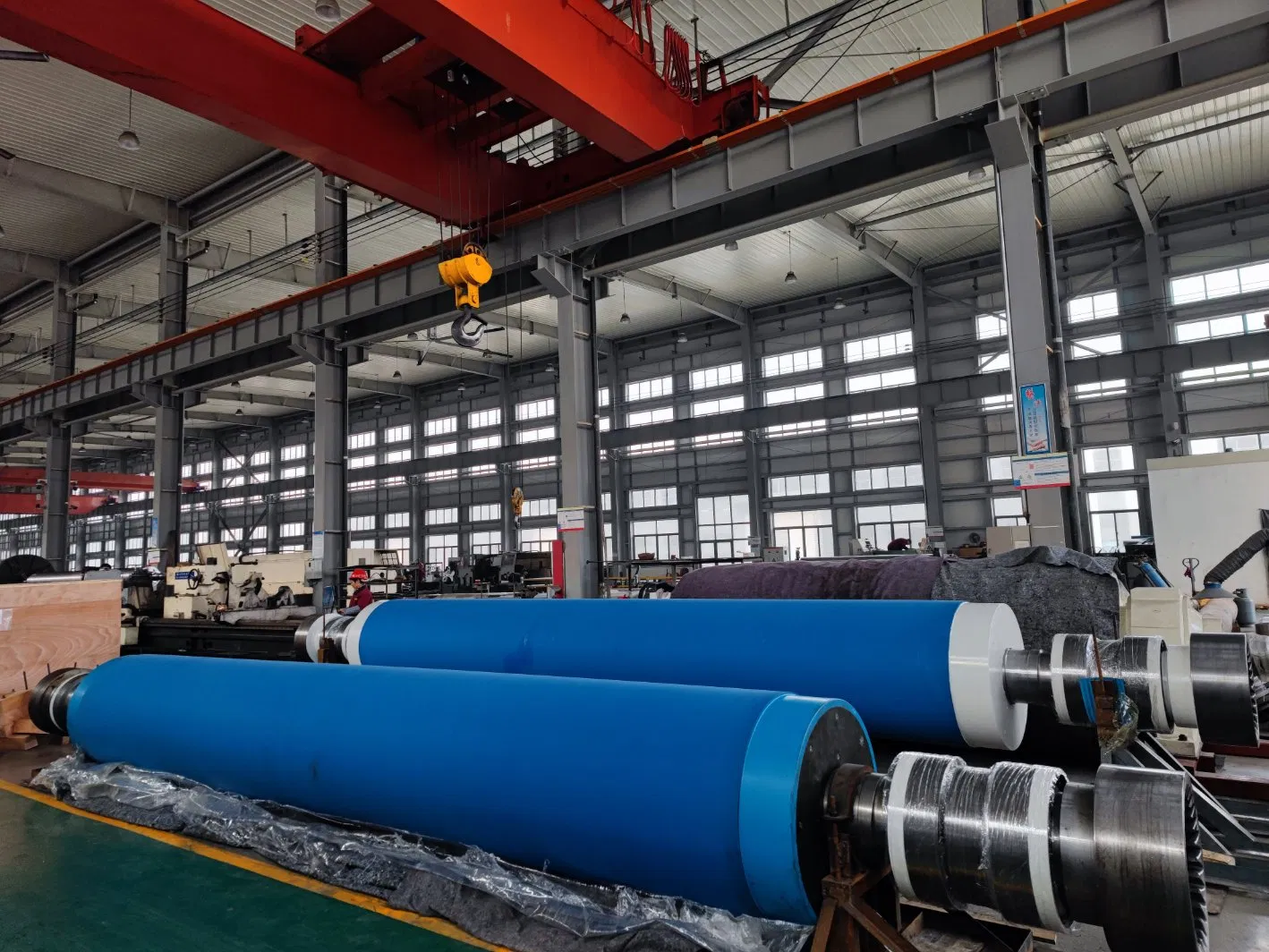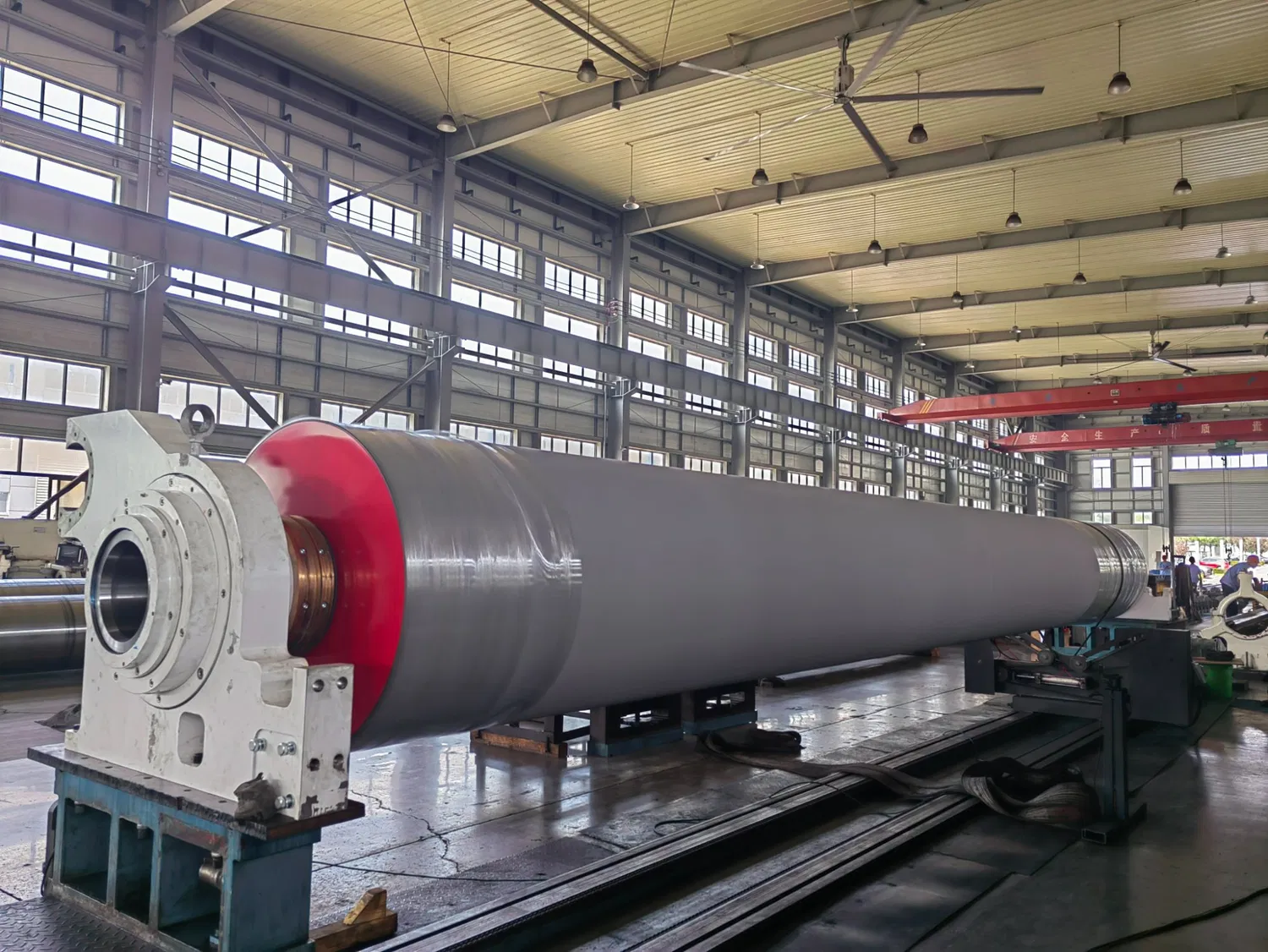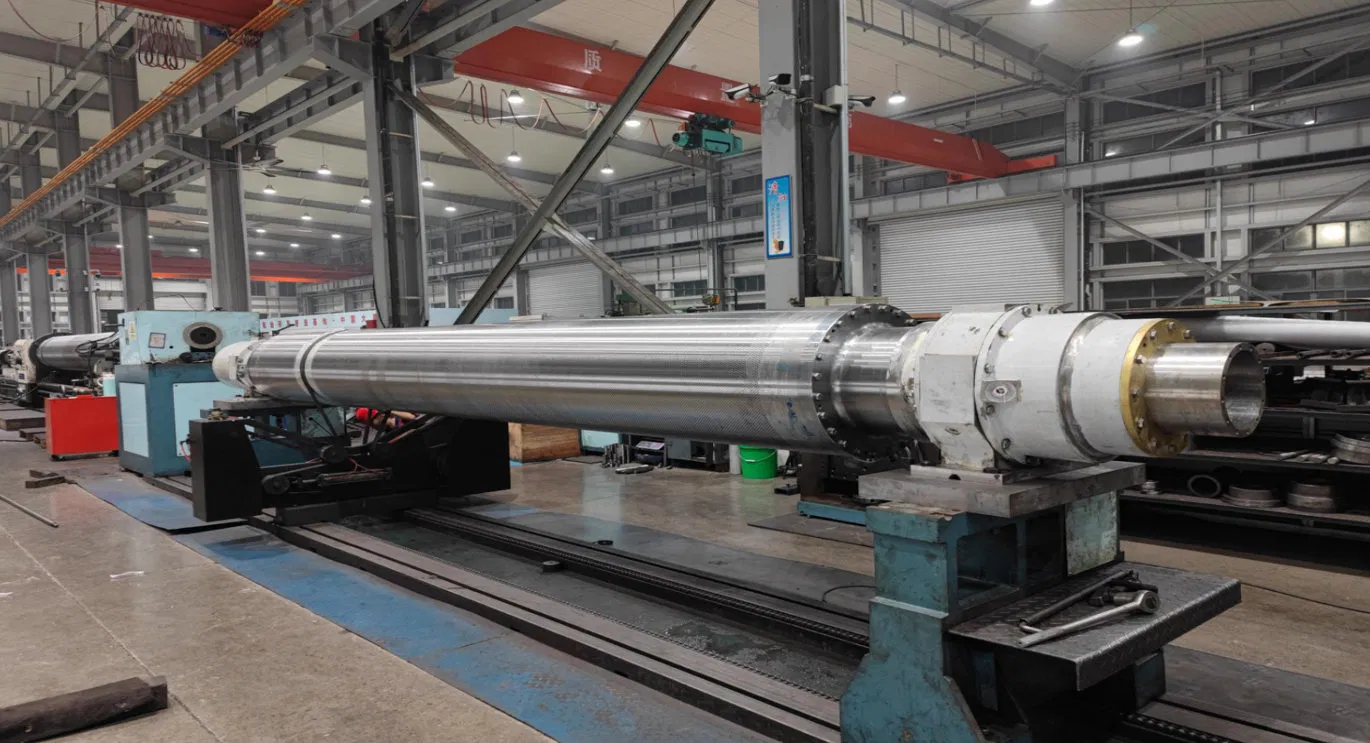In the intricate world of paper manufacturing, every component plays a pivotal role in the efficiency and profitability of the operation. Among these, paper machine rolls stand out as critical workhorses, directly impacting product quality, energy consumption, and overall uptime. A significant investment, these rolls are not merely pieces of machinery; they are precision-engineered components designed to withstand immense pressures, extreme temperatures, and corrosive environments. Yet, despite their importance, many mills fall prey to common, often costly, mistakes when it comes to specifying their next paper machine roll investment. To be honest, these errors can cascade into premature failures, increased maintenance, and substantial production losses.
This article aims to shed light on the Top 3 Costly Mistakes to Avoid When Specifying Your Next Paper Machine Roll Investment. By understanding and actively mitigating these pitfalls, you can ensure your investment delivers maximum return, enhances operational efficiency, and significantly reduces the likelihood of unexpected downtime. Interestingly enough, many of these mistakes stem from a focus on short-term gains rather than long-term value. Let's dive in.
Mistake 1: The Peril of Under-Specifying for Operational Realities
One of the most frequent and arguably most damaging mistakes I've found in my experience is the failure to thoroughly consider and specify the actual operational conditions a new roll will face. It’s not enough to simply replace a roll with one of the same dimensions. Modern paper machines operate at higher speeds, with more aggressive chemistries, and under increasingly demanding loads. Neglecting these evolving realities can lead to a roll that is fundamentally unsuited for its task, resulting in accelerated wear, frequent regrinds, and even catastrophic failure.
Ignoring the Nuances of the Process Environment
Every section of a paper machine—from the forming section to the calender—presents unique challenges. A press roll, for example, endures immense nip pressures and often operates in a wet, chemically active environment. A dryer section roll, on the other hand, must withstand high temperatures and thermal cycling. Failing to account for these specific environmental factors is a recipe for disaster. Have you ever wondered why a seemingly robust roll fails prematurely? Often, it's because its material composition, cover type, or internal design wasn't optimized for the exact temperature, pH, chemical exposure, or abrasive particles present in its specific location.
For instance, specifying a roll with a standard rubber cover for a high-abrasion application in the forming section, where fillers and pigments are prevalent, will inevitably lead to rapid wear. Similarly, a roll without adequate internal cooling or proper thermal expansion considerations in a high-temperature dryer section can warp or crack. It’s worth noting that even subtle changes in paper furnish or process chemicals can significantly impact roll performance and longevity.
The Importance of Detailed Data Collection and Analysis
To avoid this costly mistake, a meticulous approach to data collection is paramount. Before making any investment, gather comprehensive data on:
- Operating Temperatures: Both ambient and internal roll temperatures.
- Chemical Exposure: pH levels, types of chemicals used (e.g., sizing agents, retention aids, defoamers), and their concentrations.
- Nip Pressures and Speeds: Current and projected operating parameters.
- Paper Grades: The range of paper grades produced, as different grades can have varying abrasive properties.
- Historical Performance: Analyze the failure modes and wear patterns of existing rolls. What caused them to fail? Was it abrasion, chemical attack, fatigue, or something else?
This data allows suppliers to recommend the optimal roll core material, cover compound (e.g., polyurethane, ceramic, specialized rubber), surface finish, and internal design features (like cooling channels or specialized bearings) that will ensure the roll performs reliably and efficiently under your specific conditions, thereby optimizing paper machine roll performance.

Mistake 2: The Short-Sighted Trap of Upfront Price Over Total Cost of Ownership
It's a classic scenario: a procurement team focuses solely on the initial purchase price, believing they're securing the best deal. However, when it comes to paper machine rolls, this approach is often a false economy and represents a significant pitfall in your next paper machine roll investment. The true cost of a roll extends far beyond its sticker price, encompassing a multitude of factors that contribute to its Total Cost of Ownership (TCO). Frankly speaking, neglecting TCO can lead to significantly higher expenses over the roll's lifespan.
Beyond the Sticker Price: Unpacking Hidden Costs
A cheaper roll might seem attractive initially, but it could be built with inferior materials, less precise manufacturing tolerances, or a less durable cover. These compromises invariably lead to a host of hidden costs:
- Increased Maintenance and Regrinding: A lower-quality roll might require more frequent regrinds to maintain its surface profile and performance, leading to higher labor costs, transportation fees, and reduced roll lifespan.
- Higher Energy Consumption: Rolls with suboptimal surfaces or internal designs can increase friction and drag, leading to higher energy consumption in the drive motors. Over years of operation, this can amount to substantial energy bills.
- Frequent Downtime and Lost Production: This is perhaps the most critical hidden cost. A roll failure or the need for unscheduled maintenance means the entire paper machine grinds to a halt. The cost of lost production—the value of the paper not made—can quickly dwarf any initial savings on the roll purchase. Many experts agree that reducing paper mill downtime is paramount for profitability.
- Reduced Product Quality: A roll that doesn't maintain its integrity or surface finish can negatively impact paper quality, leading to rejects, customer complaints, and reputational damage.
- Shorter Lifespan: A cheaper roll might simply wear out faster, requiring replacement much sooner than a higher-quality, more robust alternative, thereby increasing the frequency of capital expenditure.
Calculating the True Lifecycle Cost of Paper Machine Rolls
To truly make an informed decision, you must calculate the lifecycle cost of paper machine rolls. This involves a comprehensive analysis that includes:
- Initial Purchase Price: The upfront cost of the roll.
- Installation Costs: Labor, equipment, and any necessary machine modifications.
- Energy Consumption: Estimated energy usage over the roll's expected life.
- Maintenance Costs: Scheduled regrinds, bearing replacements, cover repairs, and unscheduled repairs.
- Downtime Costs: Estimated cost of lost production due to roll-related issues.
- Disposal/Recycling Costs: At the end of the roll's life.
- Expected Lifespan: How long the roll is projected to last before replacement.
By comparing the TCO of different roll options, even if one has a higher initial price, you might find that it offers significant savings over its operational life due to superior performance, lower maintenance, and extended lifespan. This strategic perspective ensures your investment contributes positively to your bottom line for years to come.

Mistake 3: Overlooking the Critical Role of Supplier Expertise and Ongoing Support
The third costly mistake, often intertwined with the second, is underestimating the value of a reputable supplier with deep expertise and robust post-sale support. Many companies focus solely on the product itself, forgetting that the supplier is a crucial partner in the success of their paper machine roll investment. Choosing a vendor based purely on a low bid, without scrutinizing their engineering capabilities, quality assurance processes, or commitment to after-sales service, can lead to chronic problems and missed opportunities for optimizing paper machine roll performance.
A Supplier is a Partner, Not Just a Vendor
A top-tier paper machine roll supplier brings more than just a product to the table; they bring a wealth of knowledge, experience, and technological prowess. This partnership is invaluable, especially when specifying complex components like rolls.
- Engineering and Design Expertise: A good supplier will have a team of engineers who can analyze your specific operational data (as discussed in Mistake 1) and recommend a custom-engineered solution. They understand the intricacies of roll dynamics, material science, and process integration. They can help you avoid mis-specifications that lead to premature wear or performance issues.
- Quality Assurance and Manufacturing Excellence: Reputable suppliers adhere to stringent quality control standards throughout their manufacturing process. This ensures that the rolls are built to precise specifications, with consistent quality, reducing the risk of defects and failures. I've found that investing in rolls from manufacturers with certified quality systems pays dividends in reliability.
- Innovation and R&D: Leading suppliers continuously invest in research and development to improve roll materials, cover technologies, and internal designs. Partnering with such a supplier means you have access to the latest advancements that can enhance your machine's efficiency and product quality.
The Lifeline of After-Sales Service and Technical Support
The relationship with your supplier doesn't end once the roll is delivered. In fact, that's often just the beginning. Robust after-sales support is critical for maximizing the lifespan and performance of your investment.
- Installation and Commissioning Support: Proper installation is crucial. A good supplier can provide technical guidance or even on-site assistance to ensure the roll is installed correctly, minimizing the risk of early issues.
- Troubleshooting and Diagnostics: When issues arise—and they inevitably will in a demanding environment like a paper mill—a responsive supplier with diagnostic capabilities can quickly identify the root cause and recommend solutions, thereby reducing paper mill downtime.
- Maintenance and Regrinding Services: Many suppliers offer comprehensive maintenance programs, including regrinding, balancing, and re-covering services. This ensures that your rolls are maintained to optimal standards throughout their life, extending their service intervals and overall lifespan.
- Training: A knowledgeable supplier can provide training for your maintenance and operations teams on proper roll handling, inspection, and care, empowering your staff to proactively manage roll health.
- Spare Parts Availability: Ensuring readily available spare parts for critical components like bearings or seals can prevent prolonged downtime in case of unexpected failures.
In my experience, a strong partnership with a knowledgeable supplier is a cornerstone of successful paper machine roll investment. They act as an extension of your engineering team, providing insights and support that can prevent costly mistakes and drive long-term operational excellence.
Beyond the Top 3: Proactive Strategies for Success
While avoiding the three costly mistakes discussed above is crucial, a truly successful paper machine roll investment strategy goes a step further. It involves proactive measures that foster continuous improvement and long-term reliability.
Embracing Data-Driven Decisions
Leverage technology to collect and analyze performance data from your rolls. This includes vibration analysis, temperature monitoring, nip profiles, and wear patterns. This data provides invaluable insights into the health of your rolls and can predict potential issues before they escalate into costly failures. Predictive maintenance, driven by this data, can significantly reduce unscheduled downtime and optimize regrinding schedules.
Regular Audits and Performance Reviews
Periodically review your roll performance with your supplier. Discuss wear rates, energy consumption, and any operational challenges. These reviews can help identify areas for improvement, validate the effectiveness of current specifications, and inform future investment decisions. It’s an ongoing process of refinement aimed at constantly improving the lifecycle cost of paper machine rolls.
Investing in Training and Skill Development
Ensure your in-house teams are well-trained in the proper handling, installation, and maintenance of paper machine rolls. A skilled workforce can identify early warning signs, perform routine checks effectively, and contribute significantly to extending roll life and overall machine efficiency.

Conclusion: Rolling Towards a More Profitable Future
Investing in paper machine rolls is a substantial commitment, and the stakes are high. The difference between a successful investment and a costly misstep often boils down to avoiding fundamental errors in specification and partnership. By diligently avoiding the Top 3 Costly Mistakes to Avoid When Specifying Your Next Paper Machine Roll Investment—under-specifying for operational realities, focusing solely on upfront cost over TCO, and overlooking supplier expertise and support—you position your mill for sustained success.
Remember, a paper machine roll is more than just a piece of hardware; it's a critical asset that, when properly specified and supported, can significantly contribute to your mill's profitability, efficiency, and product quality. Take the time, gather the data, partner with the right experts, and look beyond the immediate price tag. Your future operational success depends on it.
For more detailed information, please visit our official website:Paper machine roll investment
About the author: Dr. Evelyn Reed is a seasoned expert in pulp and paper manufacturing, with over 20 years of experience specializing in paper machine optimization and component reliability. Her work focuses on bridging the gap between engineering specifications and operational realities, helping mills achieve peak performance and extend asset lifespan. She frequently consults on critical investments, emphasizing total cost of ownership and sustainable practices in the industry.


